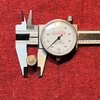velocette
Member
Verrry interesting, I was test chambering my latest batch of 100 .38 Spl. reloads. I use a speedloader & test chamber all the ammo I plan on using in my club's pseudo PPC competition. I usually get one or two that don't chamber properly. This time I got 15 that would not chamber.
Inspection revealed that all but two were PMC brass. These reloads are 148 grain Double Ended Wadcutters. Both ends are identical. All of the PMC rounds that would not chamber had a concentric bulge right at where the DEWC end was in the case. Rather apparently the PMC brass is thicker than others at that part of the case.
Also interesting was that the PMC rounds that would not chamber in my 5 screw 1954 Target Masterpiece (forefather of the model 14) they ALL chambered in my model 15-2 Combat Masterpiece made many years later. To be honest, some of them did chamber in the 15 snugly but without using force. None of them were +P or +P+ brass.
Something else to watch for when reloading for my revolvers.
Inspection revealed that all but two were PMC brass. These reloads are 148 grain Double Ended Wadcutters. Both ends are identical. All of the PMC rounds that would not chamber had a concentric bulge right at where the DEWC end was in the case. Rather apparently the PMC brass is thicker than others at that part of the case.
Also interesting was that the PMC rounds that would not chamber in my 5 screw 1954 Target Masterpiece (forefather of the model 14) they ALL chambered in my model 15-2 Combat Masterpiece made many years later. To be honest, some of them did chamber in the 15 snugly but without using force. None of them were +P or +P+ brass.
Something else to watch for when reloading for my revolvers.







